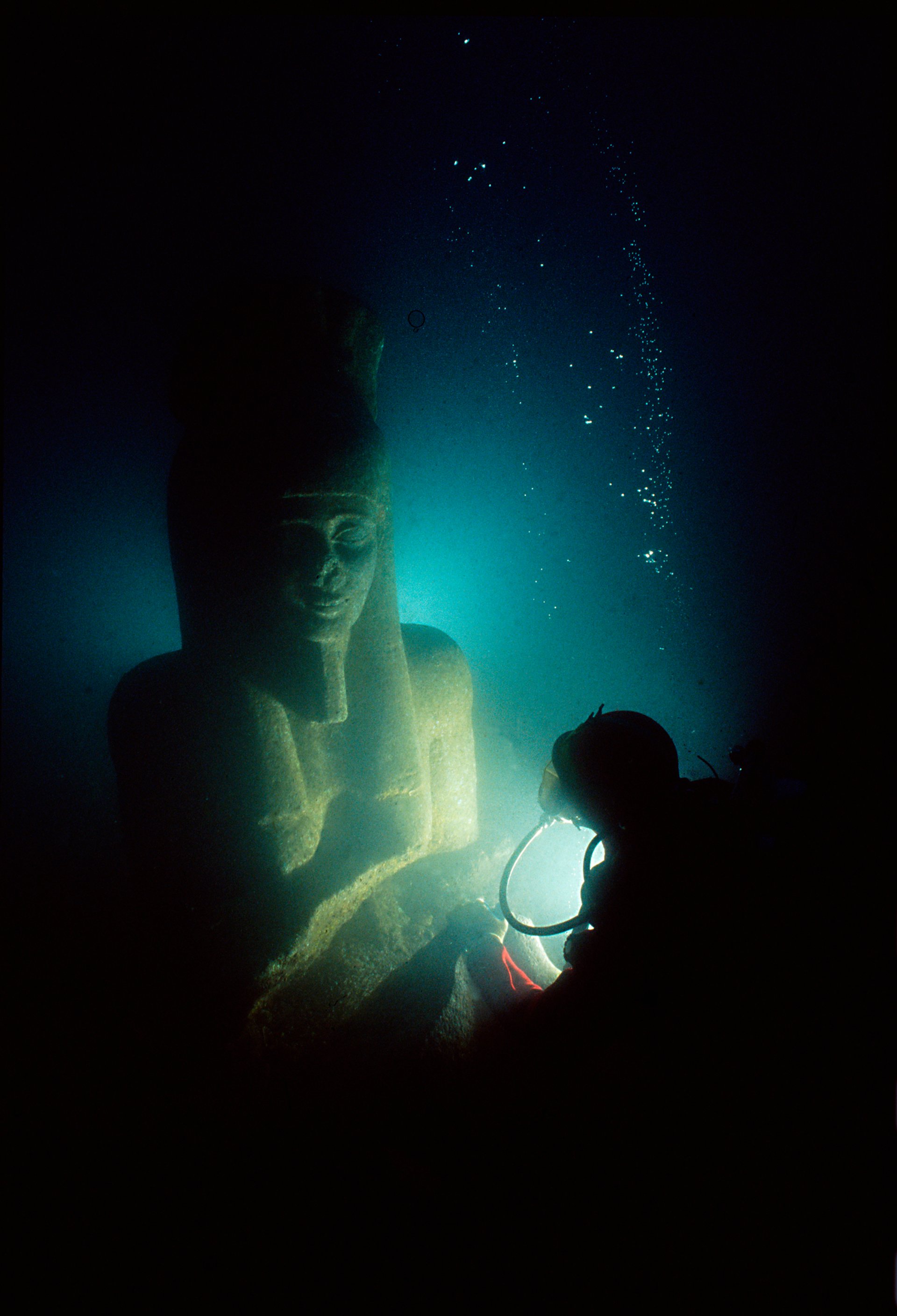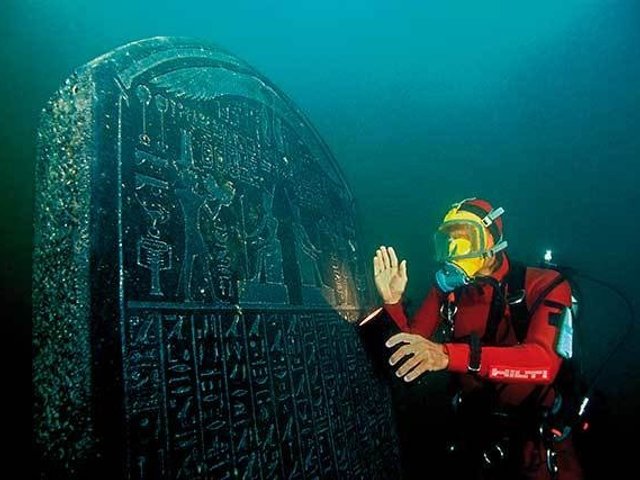Egypt’s first major loan of antiquities since the 2011 revolution is to come to the British Museum, for an exhibition of underwater discoveries. Nasser Kamel, the Egyptian ambassador in London, says that the announcement is particularly timely after the terrorist attack in Paris. Egypt had close links with Greece in the late first millennium BC and the ambassador wants the Mediterranean to continue to be a sea of cooperation: “Tolerance is what we need, and this exhibition will play an important role.”
Sunken Cities: Egypt’s Lost Worlds, which opens next May, will be the British Museum’s first show focussing on underwater archaeology. It will present recent discoveries from two submerged islands at the mouth of the Nile near Alexandria —Thonis-Heracleion and Canopus, both founded in the seventh century BC. A thousand years later they had fallen beneath the sea.
The sites were found by the French underwater archaeologist Franck Goddio, who has been working there for 20 years. The co-curator of his exhibition is Aurélia Masson-Berghoff, a British Museum curator in the Greece and Rome department who specialises in Egypt.
A version of the exhibition is currently at the Institut du Monde Arabe in Paris (until 31 January) and it will later go on to the Museum Rietberg in Zurich (2017). Whereas the Paris and Zurich shows centre primarily on the god of the afterlife, Osiris, the London presentation will stress Egypt’s links with Greece.
The British Museum will be showing around 300 objects, of which 200 have been excavated by Goddio and are owned by the Egyptian state. The Egyptian ministry of antiquities is lending a further 50 items excavated elsewh ere. Fifty pieces will come from the British Museum’s own collection, primarily from Naukratis, the first Greek settlement in Egypt.

The presentation of Sunken Cities will open with a 5.4m-tall granite figure of Hapy, a divine personification of the Nile’s flood. Other finds by Goddio include a sculpture of Arsinoe II, the eldest daughter of Ptolemy I, founder of the Ptolemaic dynasty. The British Museum exhibition will run for six months (longer than the standard four-month period), because of the high cost of mounting the show and its anticipated popularity.
Sunken Cities: Egypt’s Lost Worlds, British Museum, London, 19 May-27 November 2016, supported by BP




